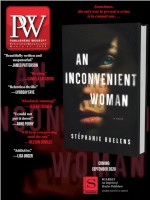There are at least eight million stories in the naked city. These anthologies round up a selection of them.
Though true crime has experienced a boom in recent years, the genre dates to well before everyone got hooked on Serial.
“True crime has fascinated audiences since time immemorial,” says The Real Lolita author Sarah Weinman, who edited the forthcoming Unspeakable Acts. “The Salem Witch Trials could be considered the first proper true crime moment in America, and 300-plus years later, we’re still grappling with many of the same issues: who is believed, who has a right to tell other people’s stories, and the thin line between those who don’t commit heinous crimes and those who do.”
One thing that’s changed, Weinman says, is that true crime has become a more participatory genre. “Lurk on an internet message board or read social media to see who feels they have the goods to play sleuth and correct an injustice or uncover a secret,” she notes. “On rare occasions that happens, but the vast majority of the time it creates larger issues: when one becomes part of the true crime machine, what does that do to those directly affected by the crime?”
Black Hawk Down author Mark Bowden, a reporter at the Philadelphia Inquirer from 1979–2003, says that part of true crime’s persistent allure is its ability to make a “crack in the wall of normalcy.” In The Case of the Vanishing Blonde, he chronicles the two decades he spent covering crimes, a career in which he saw “ordinary people placed in difficult and sometimes horrifying situations.”
In terms of grappling with the morality of reporting on crime, Bowden says he has “no interest in exploiting victims or celebrating malfeasance,” but instead sets out to understand “how and why people do terrible things. Telling these stories unavoidably draws attention to horrific behavior, but in the best true crime stories the act itself is just where the story starts.”
The coming months bring true crime collections that showcase the category’s breadth and examine what it means to create and consume stories of violence and grief.
The Best New True Crime Stories: Small Towns
Edited by Mitzi Szereto. Mango, July
“We’re always hearing about the evils and dangers of big cities,” says Szereto, who edited a prior true crime anthology of serial killer stories. With the new collection, she says, she sought to undo the “idealized” image of small towns. For instance, in “Who Killed Gabrielle Schmidt,” a five-year-old girl is found murdered in Germany’s heavily forested East Hesse Highlands. Nearly 40 years later, Alexandra Burt (The Good Daughter), who grew up in the region, writes of how the crime haunts her as she raises her own daughter.
The Case of the Vanishing Blonde
Mark Bowden. Atlantic Monthly, July
Bowden winnowed his long career down to coverage of six crimes, selecting stories he not only found compelling but that also “touched on important issues,” he says, such as the “victimization of women” and “overzealous policing.” In the title story, private investigator Ken Brennan works doggedly to solve the rape and beating of a woman left for dead in the Florida Everglades, who somehow disappeared from her hotel room without detection by surveillance cameras.
Ripped from the Headlines!
Harold Schechter. Little A, July
The exploits of Depression-era homicidal sweethearts Bonnie and Clyde and the 1960s strangler who inspired the necktie murders in Alfred Hitchcock’s Frenzy are among the true stories behind many of cinema’s most famous crimes and criminals. Schechter, author of numerous books on serial killers, tracks the path from felony to film.
Unspeakable Acts
Edited by Sarah Weinman. Ecco, Aug.
Weinman gathers 13 works of crime writing from the past five years, such as Pamela Colloff’s “The Reckoning,” in which a survivor of the 1966 University of Texas Tower shooting wrestles with the impact of that day 50 years later. Weinman says she sought out pieces that “do not fit the template of the ‘dead girl’ narrative.” Instead, she chose stories that “illuminated injustice and highlighted marginalized communities, that commented expressly on the complicated calculus of consuming true crime.” New Yorker staff writer Patrick Radden Keefe (Say Nothing) contributes the introduction.



 Volume 267
Issue 12
03/23/2020
Volume 267
Issue 12
03/23/2020





